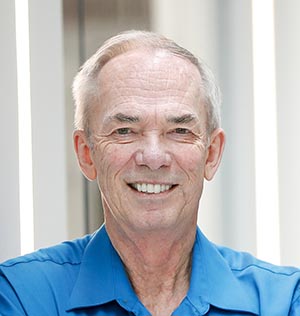APS recently appointed Professor Joseph Kapusta, School of Physics and Astronomy, University of Minnesota as the Lead Editor of Physical Review C. Professor Kapusta takes the helm following the journal’s previous Lead Editor Benjamin F. Gibson.
We sat down, virtually, with Professor Kapusta to learn more about his vision for this storied journal.
What does it mean to you to be the lead editor of Physical Review C?
I am honored and humbled to become only the fourth Lead Editor of PRC in 50 years. The journal has a history of being superbly managed. We have an amazing team comprised of a Managing Editor, 12 Associate Editors, and 1 Assistant Editor. They have the expertise to handle all areas of nuclear physics. They, along with a rotating Editorial Board of 15 members, are what makes PRC the most prestigious nuclear physics journal in the world. Having served as an Associate Editor for many years, I am very proud of this journal.

Joseph Kapusta
What is your vision for the journal?
PRC must maintain its high standards for quality so that it is the journal of choice for researchers. As such, it must respect its authors and honor its conscientious referees. I want to continuously build and replenish our referee base by bringing on board early career physicists who are publishing creative research in nuclear physics. We are planning to hold monthly Zoom meetings for authors and referees to provide brief tutorials or information sessions on the editorial process, to answer questions, and to seek comments and feedback so that we can continually improve the journal.
What research are you working on right now?
I am a theorist. My group and I are focusing on the high baryon density matter produced in heavy ion collisions in the Beam Energy Scan II at the Relativistic Heavy Ion Collider (RHIC) at Brookhaven National Laboratory (BNL). A big question is whether the QCD phase diagram has a critical point at some value of temperature and chemical potential. We are constructing equations of state with parameters that can be adjusted to represent experimental data. To do this requires us to simulate these collisions from the initial contact through hydrodynamic modeling to the final state of particle emission. It is both challenging and exciting.
Where do you see growth in nuclear research?
Nuclear physics is a well-established but continuously evolving field. Examples of the evolution in accelerator-based research include the Facility for Rare Isotope Beams (FRIB) at Michigan State University, expected to begin operations soon; the Electron Ion Collider (EIC) at BNL, which has been approved for construction; the Facility for Antiproton and Ion Research (FAIR), under construction in Germany; and the Large Hadron Collider (LHC), which will likely run well into the 2030's.
Multi-messenger astronomy is beginning to allow for the observational study of neutron star mergers and to provide information on the properties of dense nuclear matter.
What was a memorable experience you had with publishing a paper?
Any time a well written manuscript containing outstanding physics receives a great review and is accepted quickly is very rewarding to me. A personally memorable time was when another journal asked me to referee my own paper!
What advice would you give to someone submitting to PRC?
Briefly, some important pieces of advice are: Consider using a structured abstract, clearly articulating the background, purpose, methods, results, and conclusion. These should be included even if the abstract is in the conventional format. Cite all relevant literature to recognize prior work performed by other authors and to show your knowledge of the field. Finally, check grammar and punctuation with whatever tools or resources are at your disposal. A paper should be a joy to read!
Correction: An earlier version of this article misstated the age of the journal and the year in which it first accepted submissions; in fact, Physical Review C was established in 1970.
©1995 - 2024, AMERICAN PHYSICAL SOCIETY
APS encourages the redistribution of the materials included in this newspaper provided that attribution to the source is noted and the materials are not truncated or changed.
April 2022 (Volume 31, number 4)
Articles in this Issue

